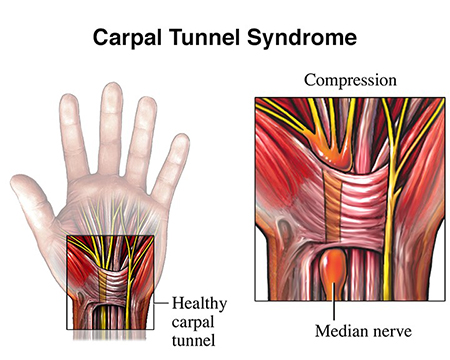Introduction
Carpal tunnel syndrome (CTS) can be a debilitating condition, causing pain, numbness, and weakness in your hands and wrists. If you’re dealing with CTS, one of your biggest concerns is likely how long it will take to heal. While the timeline for recovery can vary depending on the severity of your condition and the treatment approach you choose, this blog will provide a comprehensive overview to help you understand what to expect.
What Is Carpal Tunnel Syndrome?
Carpal tunnel syndrome occurs when the median nerve, which runs from your forearm into the palm of your hand, becomes compressed or pinched at the wrist. This compression can lead to symptoms like tingling, pain, and weakness in the affected hand. CTS is often caused by repetitive hand movements, wrist anatomy, or underlying health conditions like diabetes or arthritis.

Factors That Influence Healing Time
The duration of recovery from carpal tunnel syndrome is influenced by several factors, including:
- Severity of the Condition
- Mild to Moderate Cases: In less severe cases, symptoms might resolve within a few weeks to months with conservative treatment.
- Severe Cases: Severe cases, where there is significant nerve damage or prolonged compression, might take several months or even require surgery for relief.
- Type of Treatment
- Conservative Treatments: Methods such as wrist splinting, hand exercises, and avoiding aggravating activities can help alleviate symptoms within 4 to 6 weeks.
- Physical Therapy: Regular physical therapy can accelerate healing and strengthen the affected area, potentially reducing recovery time.
- Medications: Anti-inflammatory medications and corticosteroid injections can provide relief but may need to be combined with other treatments for optimal results.
- Surgical Intervention: If conservative treatments are ineffective, surgery might be necessary. Post-surgery recovery typically takes about 6 to 8 weeks, though it could take longer for complete healing.
- Lifestyle Adjustments
- Ergonomics: Adapting your work environment to minimize strain on your wrists can prevent further damage and aid in faster recovery.
- Activity Modification: Reducing or altering activities that exacerbate your symptoms can significantly impact your healing timeline.
Recovery Timeline for Different Treatments
- Non-Surgical Treatments
- Wrist Splints: Wearing a wrist splint at night or during activities can improve symptoms in 4 to 6 weeks.
- Steroid Injections: Relief can be almost immediate but may only last a few months. Repeat injections can be necessary, but they do not guarantee permanent healing.
- Hand Therapy: This can reduce symptoms within weeks, but full recovery may take up to 3 months depending on consistency and severity.
- Surgical Recovery
- Carpal Tunnel Release Surgery: The most common procedure, this surgery relieves pressure on the median nerve. Initial recovery (returning to light activities) usually takes 6 to 8 weeks, but complete recovery can take 3 to 6 months.
- Post-Surgical Therapy: Engaging in post-operative physical therapy can expedite recovery and improve outcomes.

Signs of Improvement and When to See a Doctor
Signs of Improvement:
- Reduced pain and tingling
- Increased hand strength
- Improved sleep due to less nighttime discomfort
When to Consult a Doctor:
- If symptoms persist or worsen after 6 weeks of conservative treatment
- If you experience significant muscle atrophy or weakness in your hand
- If your condition severely impacts daily activities despite treatment
How to Speed Up the Healing Process
- Maintain Proper Ergonomics: Adjust your workspace to ensure that your wrists are in a neutral position.
- Incorporate Hand Exercises: Regular hand exercises can strengthen muscles and improve flexibility.
- Use Supportive Devices: Products like wrist braces or ergonomic mice can reduce strain on your wrists and help prevent symptoms from worsening.
- Stay Active: Regular movement and avoiding prolonged periods of inactivity can improve circulation and aid healing.
Conclusion
The time it takes for carpal tunnel syndrome to heal varies widely based on several factors, including the severity of your condition and the treatment methods you choose. While some people may experience relief within a few weeks, others may require several months of treatment or even surgery. By understanding the factors that influence healing and adhering to a consistent treatment plan, you can take proactive steps to manage your symptoms and expedite recovery.
Call to Action: If you’re struggling with carpal tunnel syndrome and want to explore effective solutions, Carpal Tunnel Gadget offers a variety of products designed to support your recovery. Browse our selection today to find the perfect tools for your needs.
